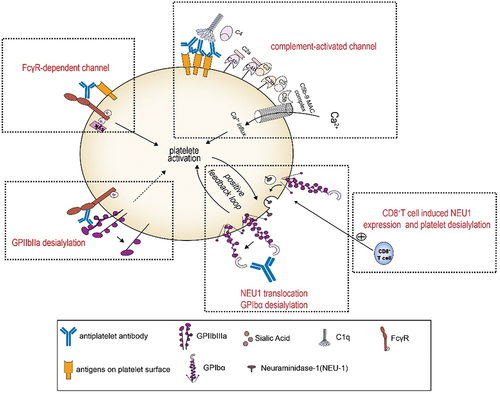Figures & data
Figure 1. Mechanisms of platelet clearance. Different types of antiplatelet antibodies bind to the corresponding antigens on the platelet surface (including HLA, HPA, and CD36 antigens), all of which can activate platelets through an FcγR-dependent or complement-activated channel, leading to the rapid removal of foreign platelets in the spleen. Desialylation is an additional mechanism of platelet destruction to be specific, anti-GPIbα antibodies induce neuraminidase-1 (neu-1) transfer to the platelet surface, causing platelet desialylation. Desialylated platelets are destroyed primarily in the liver via the ashwell morell receptor. Simultaneously, platelet activation and desialylation form a positive feedback loop. Compared to anti-GPIbα antibodies, anti-GPIIb/IIIa antibodies initiate platelet desialylation via the FcγRIIa-dependent pathway and, to a lesser extent, platelet activation. CD8+T cells can also induce Neu1 expression and platelet desialylation. HLA, human leukocyte antigen; HPA, human platelet antigen; GP, glycoprotein.

